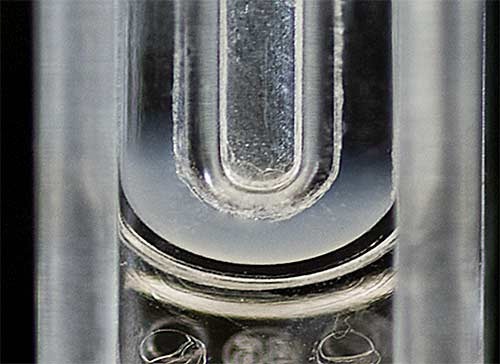Diffusion barrier technique is a method of measuring zeta potential using Zetasizer Nano instruments, while preventing the denaturation of proteins.
This method also measures colloidal sample with high conductivity. However, an increase in conductivity affects the zeta potential measurements in such samples owing to a number of factors such as electrode polarization, sample degradation, electrode blackening and Joule heating.
Although the automatic settings of the instrument minimize these problems, the application of diffusion barrier technique will further reduce the effects of field on the zeta potential results.
This article describes the application of the diffusion barrier technique to samples with high conductivity by measuring various liposome samples.
Sample Preparation Method
Liposomes were prepared using sonication technique. Following this, dipalmitoylphosphatidylglycerol (DPPG) and dipalmitoylphosphatidylcholine (DPPC) were mixed in phosphate buffered saline (PBS) to prepare three different types of anionic liposomes. Table 1 shows the final concentration of the prepared liposomes.
Table 1. Summary of the liposome compositions prepared.
| Liposome Composition |
DPPC (mg) |
DPPG (mg) |
PBS (mL) |
| 1 |
29 |
1 |
3 |
| 2 |
27 |
3 |
3 |
| 3 |
25 |
5 |
3 |
Characterization of Liposomes
A Zetasizer Nano ZSP operating at 25°C was used to carry out both zeta potential and size measurements of the samples. For sizing measurements, the samples were diluted 1 in 100 with PBS using dynamic light scattering (DLS) technology. However, for zeta potential measurements, the measurement zone was inserted with a folded capillary cell filled with PBS and a 50µL aliquot of liposome sample via a gel loading pipette tip as shown in Figure 1.

Figure 1. Photograph showing a liposome aliquot injected into the measurement zone of a folded capillary cell containing PBS.
Experimental Results
Measurement of zeta potential of samples prepared using PBS is quite challenging owing to a number of factors as discussed above. The z- average diameters and zeta potential means of three different liposome compositions were outlined in the Table 2. The results obtained are the mean values of five repeat measurements along with the standard deviations.
Table 2. The z-average diameters (in nm) and mean zeta potential values (in mV) of the various anionic liposomes prepared in PBS. The standard deviation values from five repeat measurements are shown in brackets.
| Liposome Composition |
z-Average Diameter (nm) |
Zeta Potential Mean (mV) |
| 1 |
133.5 (1.35) |
-5.8 (0.47) |
| 2 |
77.4 (0.86) |
-14.4 (0.43) |
| 3 |
67.1 (0.7) |
-19.2 (0.74) |
The results showed excellent consistency during repeat measurements. In addition, the expected trend of the mean showed more negative zeta potential results with an increasing DPPG content.
Conclusion
The diffusion barrier method is a measurement method that minimizes the effects of field application over zeta potential results. This method was originally developed for measuring the protein electrophoretic mobility. However, it can also be used for the measurement of any sample prepared using medium with high conductivity, which is evident from the results of repeat zeta potential measurements in this experiment. Another major advantage of this technique is its low sample volume requirement i.e. below 20µL.

This information has been sourced, reviewed and adapted from materials provided by Malvern Panalytical.
For more information please visit Malvern Panalytical.